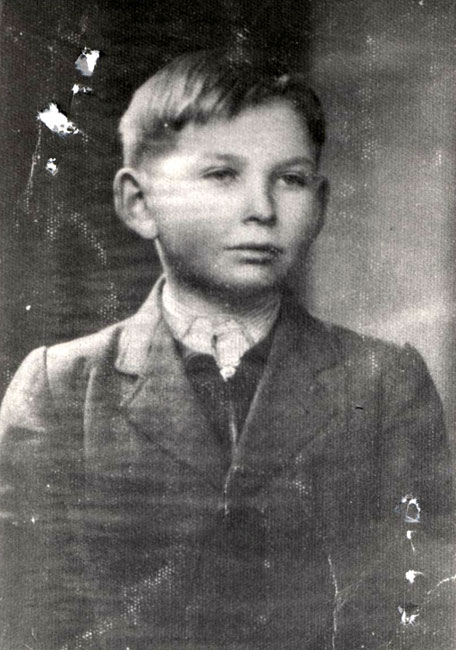A Glimpse of the Past: Visit of the Lichtman Family to Relatives in Munkacs and Batyu in 1938
In 1938, Dora Lichtman née Klein, her husband (name unknown) and her daughter Gloria arrived from the US to visit her parents and family. They captured their visit on film.
The film was shot at the home of Dora’s parents, Chaim Tzvi-Hirsch and Nina Klein, in Munkács, as well as in the village of Batyu, some 30 km from Munkács, where Chaim Tzvi-Hirsch’s brother, Moshe, and his wife, Tzila, lived. Chaim Tzvi-Hirsch’s son David married Moshe’s daughter Ilona, and the two lived with Moshe and Tzila in Batyu.
David and Ilona's son, Oskar, donated the film to Yad Vashem. He identified the family members appearing in the film, and described what had happened to each of them.
Chaim Tzvi-Hirsch and Nina Klein were sent to the Munkács ghetto. They were deported to Auschwitz in May 1944, where they perished.
Their daughter Marishka Schwartz (née Klein) lived in Hungary. She also perished. The circumstances of her death are unknown. Their son, David Klein, his wife Ilona and their children Oskar and Yehoshua (Tibor), were concentrated with the rest of the Jews of Batyu in the Beregsas (Berehovo) ghetto. In the second half of May 1944, David Klein, his wife, children and his wife’s parents, Moshe and Tzila Klein, were sent to Auschwitz. David passed the selection. He died in 1945 on a death march that left from Buna-Monowitz. His wife Ilona was murdered in the gas chambers with her 11-year-old son, Yehoshua, as well as Ilona’s parents, Moshe and Tzila. Oskar survived.
Two other of Moshe and Tzila's daughters appear in the film: Aliza (Bazka) Klein, who survived, and Gizi Horshtein (née Klein). Gizi died in Auschwitz. The exact circumstances of her death are unknown.
Working together with Oskar Klein, researchers in Yad Vashem’s Film Archive have identified the people and places appearing in the film. In addition to preserving the material for perpetuity in the Yad Vashem Archives, the film is now made available to the public, providing a glimpse into the prewar lives of one family from Munkács and Batyu, commemorating and preserving the names and faces of just a few of the victims of the Holocaust.





